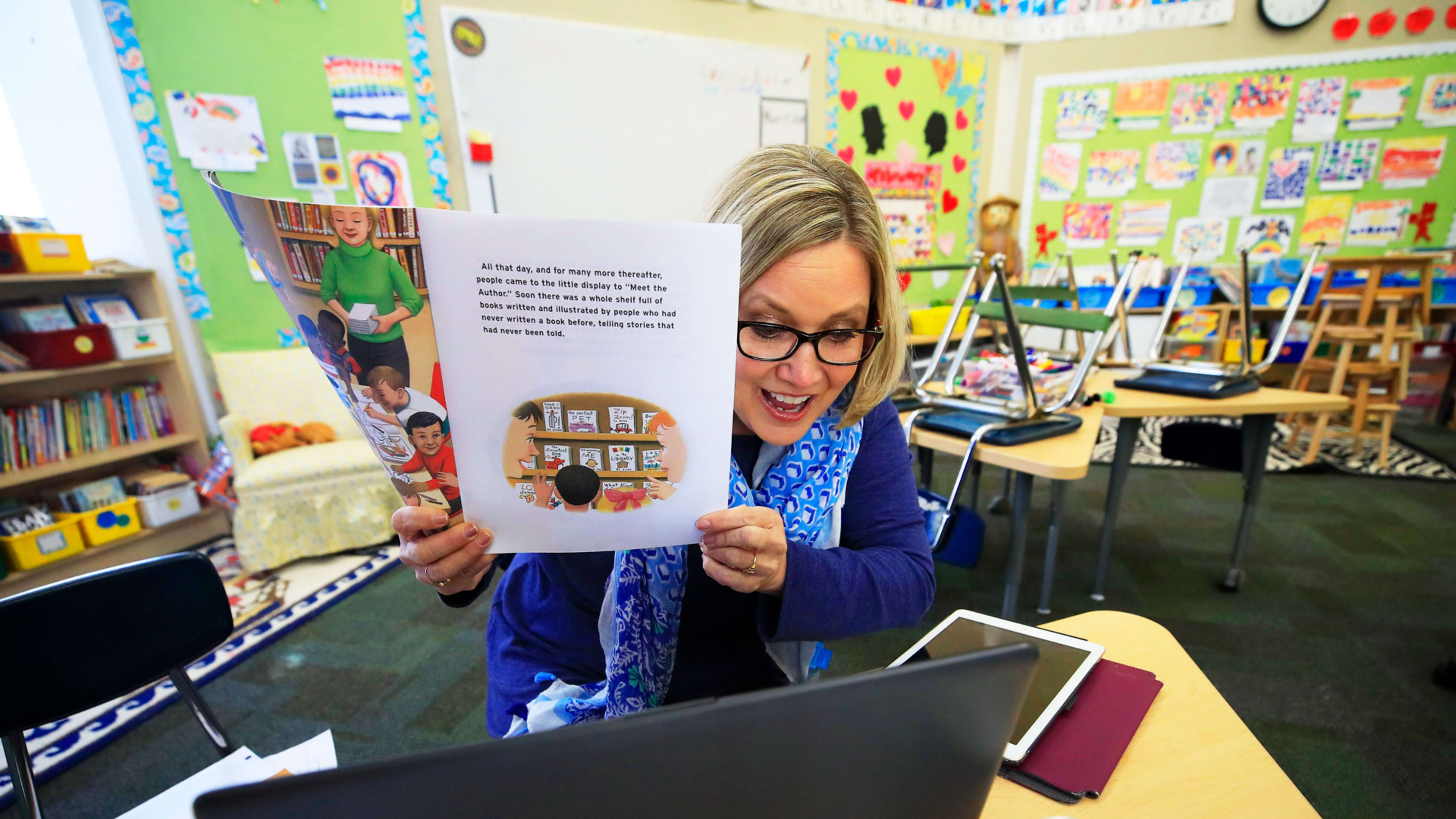In today’s fast-changing remote environment, virtual presenting is the new way business and education communication is done. When I say virtual presenting I’m referring to when you share your content in-screen during a video call or recorded video, while maintaining the ability to keep your video presence alongside your content and interact with your visuals versus hiding behind them (similar to how your local weather person operates).
Research shows virtual presentations lead to more engaging communication. Virtual presenters naturally choreograph their movement to go hand-in-hand with the content, and the in-screen content brings to life their talk-track.
Today, there are surprisingly few people even presenting with the screen-share function on video calls. This seems to be because they don’t want to hide behind their content. However, with the ability to virtually present next to your face using tools like Zoom, live video meetings will quickly evolve in 2021 and an unexpected group will decide the tech “winners” in this category: Educators. Here are the roles teachers will play in shaping technology use.
Teachers are seasoned communicators
Interacting with virtual presentations is more engaging because it makes the presenter a part of the content. The same applies in the opposite direction: the presentation is meshed with the presenter’s words and gestures. The effect is increased depth and interactivity, which brings the audience in deeper. I know this since my company, Prezi, has seen it used for generations through teachers interacting with whiteboards before the toughest audience out there—kids.
When COVID-19 began, we saw teachers become the earliest widespread adopter of Prezi’s virtual presentation tool by instinctively knowing how to visually reference the content in-screen. My team saw their usage spread out across the world, in 175 countries.
We’ve also always seen teachers serve as the subject-matter expert on “one-to-many” communication. When many regions of the country were sheltering in place, teachers immediately began building libraries of recorded video lessons to share information asynchronously so students could own their schedules and have the ability to digest information at their own pace.
I believe businesses will catch up with teachers on recorded video in the coming year, just like the business enterprise has recently caught up on virtual presentations.
Nevertheless, teachers are certainly leading the way. One notable example, my company has recently seen educators shift to a relatively even balance of live and recorded lessons, which certainly offers a glimpse into the overall population’s blended use of synchronous and asynchronous video.
Teachers as “super influencers”
Educators are becoming internet stars, as their libraries of content merge together to become a Netflix of video lessons, teachers’ syllabi will become curated mixtapes of videos from the best teachers on each subject. I see teachers gaining followings of other teachers, their students, and these students’ parents.
Prezi has worked with school principals who use virtual presentations for daily announcement and videos. The point out a big shift has been parents joining the student body. Parents will increasingly use the tools their teachers suggest, which also helps to consolidate platforms, and then will also bring the tools back to the workplace.
The education platform of the future will look like the modern marketing “stack.” All the major tech companies in the space will make sure they are working backward from these primary decision-makers as this new technology takes form.
The technology winners
In my view, the “future tech winners” will be the platforms that are used by both education and business, or companies who offer an environment where both groups can create content inside the communication tools. This means that educators will be integral to shaping these blended marketplaces and platforms. They will increasingly shift to making decisions like titans of the business world, becoming executives, board members, and venture capitalists.
As the leaders of their students and class curriculum, teachers advocate for communication that entire classrooms can understand. Educators will take this virtual enterprise emerging in recent months and steer it towards greater audience inclusivity. In the future, tactics like heavier use of images in videos, low-stakes and more engaging “round robins” for feedback delivery, shorter and more digestible content, and proactive and more positive community moderation will be the norms. With teachers at the wheel, I see everyone using technology smarter, as well as improving communication and reaching more people.
Jim Szafranski is the CEO of Prezi, which he joined in 2015. Before becoming CEO, Jim was the president at Prezi, a role in which he steered the company’s expansion into video and developed its collaboration partners. Since earning degrees from MIT and Stanford, Jim has built his career around helping users and communities adopt new technologies.
Recognize your brand’s excellence by applying to this year’s Brands That Matter Awards before the early-rate deadline, May 3.
